START TYPING TO SEE PRODUCTS YOU ARE LOOKING FOR.
0
Your shopping cart is empty.

Common Issues With the 7.3L Power Stroke
We live in a world where things are always changing. Technology moves forward at such a pace that it can be difficult to simply keep up. Computers, phones, and even TVs all seem to need replacing on a regular basis as new models come out and consumers feel the need to upgrade. That’s not always the case, however. Once in a while, something comes along that, despite its flaws, endures expectations. The 7.3L Ford Power Stroke is one example of surprising durability, with tens of thousands still on the road.
Why is this engine so highly regarded? What is so great about it and how can it be made even better?

First introduced to Ford’s F-Series truck lineup in 1994, the 7.3L Power Stroke diesel could be paired with either the ZF 5-speed manual transmission or the E40D 4-speed automatic transmission. These 1994 Power Stroke-equipped trucks produced 210 horsepower and 425 lb-ft of torque.
Made by International Navistar, the engine’s performance was a considerable step up from the performance of the 6.9L IDI and 7.3L engines that came before it. The engine’s displacement was the same as its predecessor, but it featured an electronically-controlled direct-injection system, allowing it to create as much as 21,000 psi. It offered tremendous reliability, greater even than the engine that followed it. It was highly successful for Ford, remaining in production until 2003.
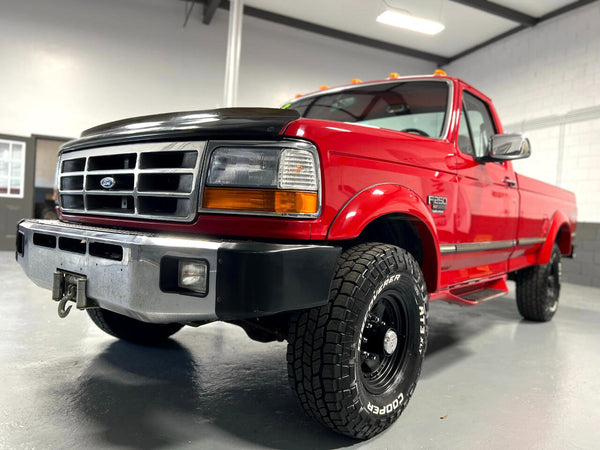
The 7.3L Power Stroke uses a single shot HEUI (Hydraulic Electric Unit Injector) injector system. This uses highly pressurized engine oil to create fuel pressure directly in the injector body, rather than a typical injection pump. The adoption of the HEUI promised greater performance and better fuel economy along with lower emissions.
As mentioned above, the 1994 Ford Power Stroke 7.3L engine produced 210 horsepower and 425 l-ft of torque, which was an increase of 40 HP and 87 lb-ft of torque compared to the IDI engine. Over the years that it was in production, the engine underwent many adjustments that made the trucks more powerful. In 1998, for example, near the midpoint of the engine’s production run, horsepower had increased to 225 HP at 3,000 RPM and torque was 450 lb-ft at 2,000 RPM. Starting that year, the trucks had caught up with California’s emission regulations and all the Power Strokes came with split-shot injectors.
By 2003, the Power Stroke was at the end of its production. In its final year, the automatic transmission provided 250 HP at 2,600 RPM while the standard transmission provided 275 HP at 2,800 RPM. The torque was 505 lb-ft at 1,600 RPM for the automatic and 525 lb-ft at 1,600 RPM for the standard.

Although well known for its durability and still sought after today, the 7.3L Power Stroke is not without its problems. Here are some of the common ones:
Located on the driver’s side fender, the IDM may suffer from water intrusion or damaged wiring, resulting in a no-start or rough running.
A faulty CMP may cause the engine to cut out and may result in it not starting. This failure often is intermittent. It is probably worth keeping a spare on hand.
The IPR, located in the valley on the high-pressure oil pump may have the sensor go bad, or the wires may get damaged. They may also stick or suffer from damaged seals.
1997 Ford F-350 Crew Cab Long Bed
While the 7.3L is underpowered by today’s standards, it was quite impressive at the time. Current owners look to upgrade parts to improve performance. Some of the parts that you can consider include:
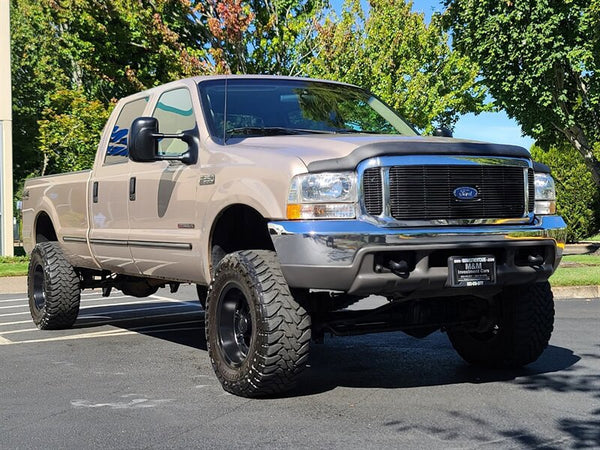
Possibly the most obvious upgrade for your vehicle would be an upgraded turbocharger. This provides a means of gaining power that is affordable and reliable. Upgrading your turbo means it can supply considerably more boost through the entire rev range, providing you with more power and torque.
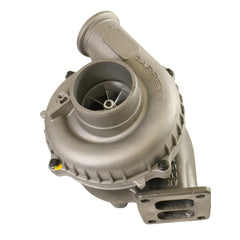
Diesel trucks have their own unique sound that differentiates them from gasoline-powered vehicles. This comes largely from the exhaust system, the replacement of which is another popular modification that can increase performance. By replacing the exhaust of your 7.3L Power Stroke, you can improve exhaust flow, lower exhaust temperatures, and reduce backpressure. This is one of the most affordable means of increasing horsepower.
Upgrading your fuel system is a great update for your vehicle, which may as much as double the stock horsepower and torque. The early Power Stroke engines are the ones most in need of a boost. Replacing a factory cam-driven lift pump with an electric unit and larger supply lines will not only provide better fuel supply pressure but also support more hp.
Another issue, particularly among the early engines their small fuel injectors sometimes providing inconsistent fuel pressure. If you are updating your fuel system, modifying your injectors can give you a boost in performance.
See all of DB Diesel's 7.3L Aftermarket and Replacement Fuel System Products Powerstroke '99-'03 and Powerstroke 94-97
Larger injectors mean more than just greater volume. With larger nozzles, fuel can be injected more quickly, meaning less timing advance to reach the desired power. This in turn means less stress is placed on the engine’s rotating assembly.
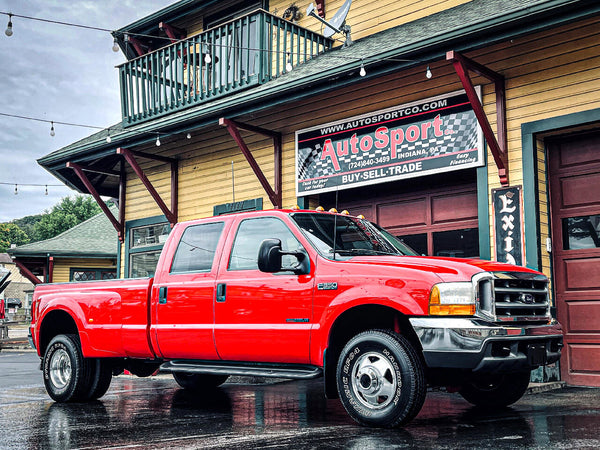
Intake upgrades are an easy means of adding greater power and efficiency and is one of the most cost-efficient ways to do so. Upgrading the intake can provide gains in torque and power, quicker response, lower EGT, and greater fuel economy.
Check out all performance upgrade parts for the 1994-1997 Powerstroke and the 1999-2003 Powerstroke here.
The 7.3L Power Stroke continues to have many fans today, and the remarkable durability ensures that they will continue to be fans for years to come, but that doesn’t mean that there’s no room for improvement.
With upgraded parts from BD Diesel, you can bring your 7.3L Power Stroke to a new level of performance. For more information about the best upgrades and how to get the most out of your engine, contact us today. We’ll be happy to answer all your questions.
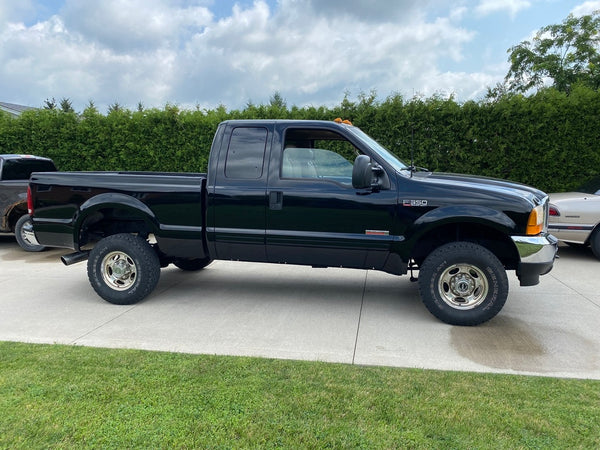
| Engine: | 7.3L Power Stroke |
| Engine Design: | Turbocharged V8 Diesel |
| Years Produced | 1994-1998 E40D 4-Speed Auto transmission ZF S5-47 5-Speed Manual Transmission 1999-2003 4R110 4-Speed Auto Transmission ZF S6-650 6-Speed Manual Transmission |
| Transmissions: |
1994-1998 E40D 4-Speed Auto transmission ZF S5-47 5-Speed Manual Transmission 1999-2003 4R110 4-Speed Auto Transmission ZF S6-650 6-Speed Manual Transmission |
| Displacement: | 7.3 Liters (444 cubic inches) |
| Bore: | 4.11 inches (104.4 mm) |
| Stroke: | 4.18 inches (106.2 mm) |
| Cylinder Head: | Cast Iron /w 6 head bolts per cylinder |
| Engine Block: | Cast Iron Block |
| Firing Order: | 1-2-7-3-4-5-6-8 |
| Compression Ratio: | 17.5:1 |
| Fuel Injection: | Direct injection with new hydraulic electronic unit injection (HEUI) Injectors Up to 21,000 PSI |
| TurboCharger: | 1994-1997 : Garrett TP38 Fixed Geometry 1999-2003 : Garrett GTP38 Wastegated |
| Valvetrain: | OHV, 2 Valves per Cylinder, hydraulic lifters |
| Pistons: | Cast Aluminum |
| Engine Oil Capacity: | 15 Quarts /w filter or 14.2 Liters |
| Coolant Capacity: | 32.75 Quarts or 31 Liters |
| Fuel: | Diesel |
| Fuel Tank Size: | 29 Gallons – Short Box 38 Gallons – Long Box |
| Horsepower (Varies): | 1994-1995 : 210 horsepower 1996 : 215 horsepower 1997-1998: 225 horsepower 1999-2000 : 235 horsepower 2001-2003 Auto Trans. : 250 horsepower 2001-2003 Manual Trans. : 275 horsepower |
| Torque (Varies): | 1994-1995 : 425 lb-ft 1996-1998 : 450 lb-ft 1999-2000 : 500 lb-ft 2001-2003 : 505 lb-ft (auto trans) 2001-2003 : 525 lb-ft (Manual Trans) |
Exact power stroke towing capacity can depend on the cab configuration, whether you have a two- or four-wheel drive and if it’s a dually. The 7.3L Power stroke conventional tow capacity is at it’s best 12,500 lbs. 7.3L Power Stroke 5th wheel tow capacity is 13,900 lbs.
| 1994.5-2003 | Conventional Tow Capacity | 5th Wheel Tow Capacity |
| 1994.5-1997 | 10,000 lbs | 13,500 lbs |
| 1999-2003 | 12,500 lbs | 13,900 lbs |
